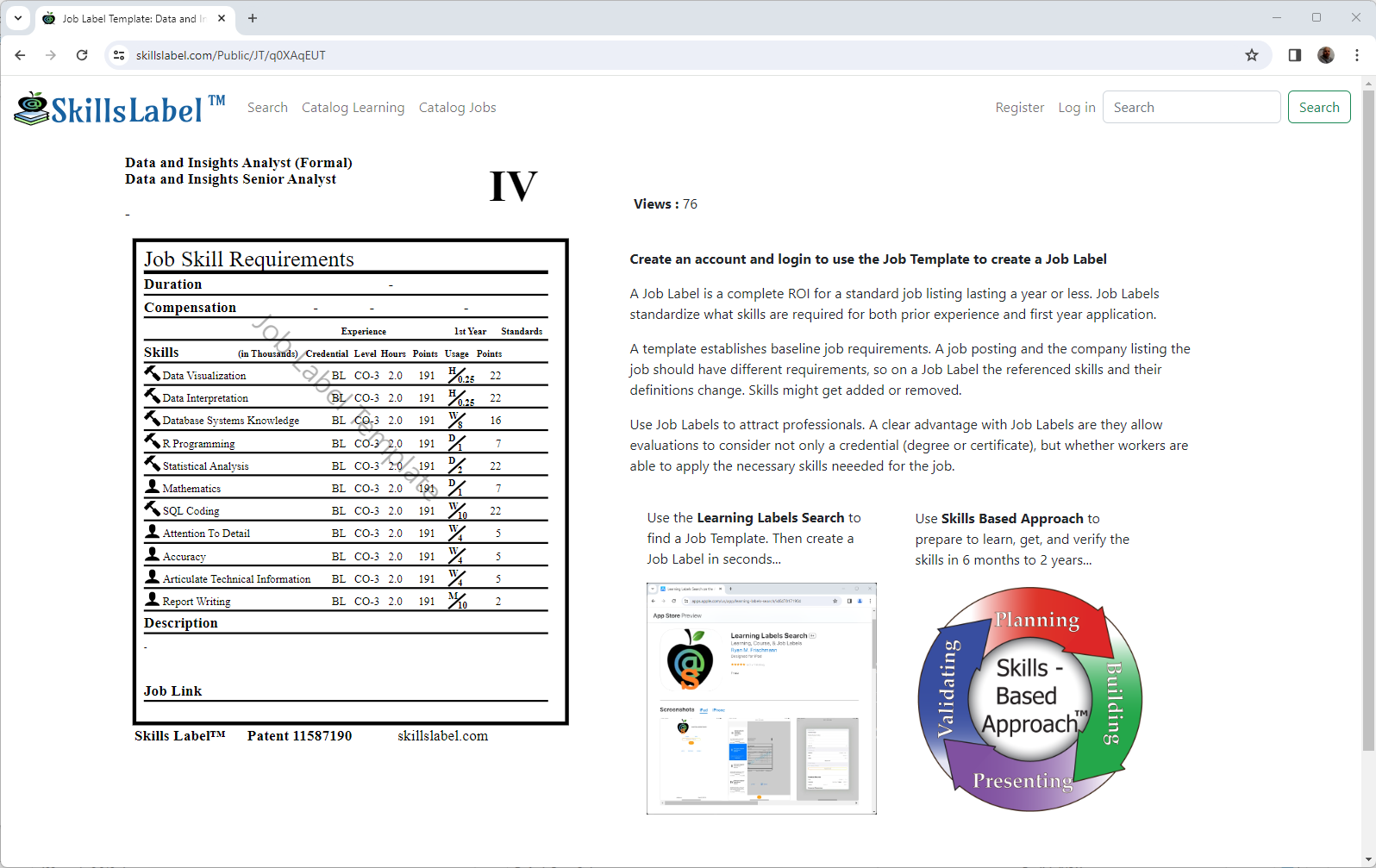A Job Label Template (based on Department of Labor defined job titles or positions) not only aid a job sourcer or practitioner in creating a Job Label – established skill requirements and ROI for a specific job, but also set baseline skills definitions to create responsive pathways from the perspective of a learner.
Why use Job Label Templates represented as Skills Based Approach (“Instances”) for planning and verifying learning in skills:
(College Students) Increase the likelihood of possessing the skills for a job upon graduation. At any opportunity choose projects, papers, activities, or courses that fit the skills represented by a Job Label Template. If necessary, during summer and holiday breaks, continue targeting the required skills. This is how we guarantee a $70k job for a college graduate – a goal Jamie Dimon mentioned in a recent Economist interview.
(Non College Students) Create your own path by taking courses and certifications necessary to acquire the skills for the job. I agree with Elon Musk, a degree is not necessary for a number of jobs. To be a network security engineer, take the necessary courses, get Microsoft certified, and apply for the job.
Pivot across learning pathways. At any time (results of a test, grade, certification, etc.) either add or remove Instances, the process is simple and not-committal.
Target multiple Job Label Templates. There is no limit to the number of Instances a learner maintains in the app. All the skills and actions targeted at each stage are saved across all Instances. Remove an instance, keep all your work and add a new Instance.
From strictly the perspective of getting a job or planning a career, thinking in semesters and degrees is too committal. Rather think in smaller units and allow pivots. In maintaining the credit hour system, at least allow for students to participate with their own goals in mind.
In all these situations and the central premise of the Skill Based Approach methodology, the prerogative is with the learner. In the app (iOS, Android, and website), the learner is in control – pivoting Instances, managing, acquiring and assessing skills, verifying credentials, etc.
Significantly, the learner gets an acute understanding of their skill and skill levels – trackable across education, higher education and career stages. Learning, Course, and Job Labels define and with Skill Points™ quantify skills for learning expectations and job requirements, respectively.
One advantage of the Job Label and Job Label Template is the separation of past experience and first year application of skills. One intention is to provide a basis for a company to decide on a candidate who may not possess the past experience, but has the skills needed for the job.
I liken the proving your skills to the interview and follow up performance of Michael Ross in the TV series Suits to get and keep a job at a reputable law firm without a law degree. Though I advocate for a young adult planning and ethically moving along their pathway.
